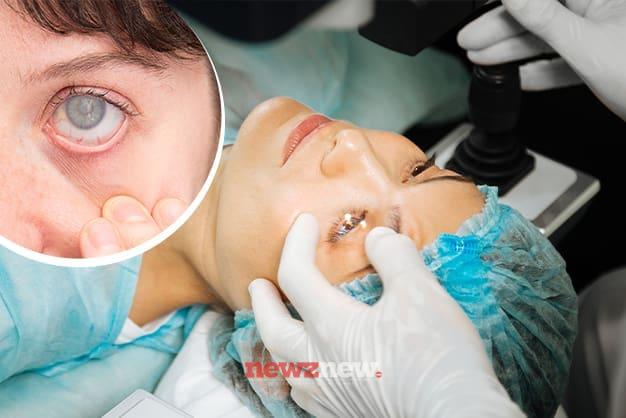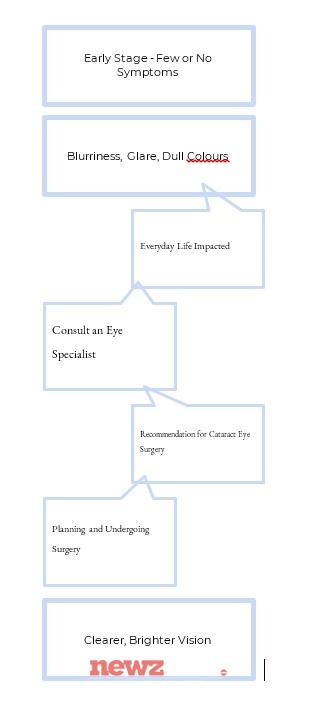Contents
Common Signs That Indicate You May Need Cataract Surgery: If you have ever found yourself struggling to read street signs, finding bright lights uncomfortably bright, or thinking that colours seem less vivid than before, these could be signs of developing cataracts.
 As we age, the chance of developing cataracts increases, and knowing the warning signs is crucial. So, what are the common signs that indicate you may need cataract surgery? Read on to find out when it might be time to consider cataract eye surgery, how the process works, and what the journey to restored vision can look like with today’s most advanced techniques.
As we age, the chance of developing cataracts increases, and knowing the warning signs is crucial. So, what are the common signs that indicate you may need cataract surgery? Read on to find out when it might be time to consider cataract eye surgery, how the process works, and what the journey to restored vision can look like with today’s most advanced techniques.
What Is a Cataract?
Think of your eye’s lens like the clear window of a camera. A cataract slowly fogs it up, making everything appear blurry, dull, or dim. A cataract is a clouding of the eye’s natural lens. It develops slowly, often making the world look a little hazier with each passing year.
Most people don’t realise how much vision they’ve lost when left untreated until everyday tasks start feeling harder. The good news? With modern cataract eye surgery, most people regain sharp, clear sight and return to the activities they love.
Typical Cataract Progression and Decision Path
You might start to say that it’s okay to ignore the early haze or the extra brightness from oncoming headlights. But with time, these small annoyances grow into bigger roadblocks. Here’s what the typical journey looks like, from those first subtle signs to the pressing stages, and what happens after:

Postoperative Period, Risks, and Long‑Term Success
Recovery:
- Most patients can resume gentle activities within days.
- Temporary mild grittiness, light sensitivity, or fluttering in vision are normal.
- Avoid rubbing the eye, swimming, or dusty environments for the first week.
- Sunglasses and prescribed drops support rapid healing.
Risks:
- Infection, swelling, lens capsule clouding (PCO), and, rarely, IOL misalignment or need for adjustment.
- Severe complications like retinal detachment or significant inflammation are rare at quality centres.
Success rates:
With up-to-date techniques and experienced surgeons, over 98% achieve significant improvement. Visual results depend on other ocular issues (e.g., macular degeneration or severe glaucoma may limit the final outcome even if the cataract surgery itself is perfect).
When Should You Consider Cataract Eye Surgery?
Cataract surgery isn’t about chasing perfection; it’s about reclaiming confidence and comfort in your daily life. There are some tell-tale signs that it might be time to take that next step.
Although cataracts progress at different rates for each person, here are some common signals:
- Day-to-day vision is affected: Tasks that used to be routine (reading, recognising faces, or driving safely) now feel challenging, even with your latest prescription.
- Night vision troubles: Driving after dark is daunting or tricky, with glare from headlights and streetlights turning simple journeys into nerve-wracking ones.
- Colour changes and fading: Familiar objects appear washed out, colours appear less vivid and bright.
- Prescription changes: You need new glasses or lenses far more often, but each adjustment brings less improvement.
- Trips, falls, and accidents: Poor depth perception or blurred distance vision increases your risk of falling.
Cataract Eye Surgery vs SMILE Eye Surgery
| Feature | Cataract Eye Surgery | SMILE Eye Surgery |
| Goal | Remove cloudy lens, restore vision | Reshape cornea to correct refractive error |
| Common Age Group | 55+ years | 18–40 years |
| Procedure Type | Lens extraction + IOL replacement | Lenticule removal via micro-incision |
| Anaesthesia | Local eye drops, mild sedation | Local eye drops |
| Hospital Stay | Day-care | Day-care |
| Recovery | Days–weeks to full clarity | 1–2 days to functional vision |
| Glasses Independence | Possible with premium IOL | Often achieved for distance vision |
Is It Better to Wait or Have Early Surgery?
Modern medical guidance suggests it is better not to wait until the cataract becomes fully mature, as earlier cataract eye surgery is simpler and recovery is usually faster. Many people think cataract surgery is something to “put off until it’s bad enough.”
But here’s the truth: waiting too long can make things harder, not better. Today’s procedures are safer and more effective when done early, before the cataract becomes dense or leads to complications.
If your cataracts are already affecting how you live, see, or move through the day, that’s your cue. Surgery to insert an intraocular lens is typically recommended when cataracts interfere with your daily comfort, safety, and independence, not just because a doctor notices something during a routine eye exam.
Cataract Progression and When to Take Action
Most cataracts progress slowly, and it’s tempting to downplay early changes. Yet as clouding spreads, reading, face recognition, driving and independence can all be affected. Key points along the decision path:
- Early symptoms: Minor blurring, more glare at night, often compensated for by brighter lighting.
- Functional impact: Difficulty with activities despite new glasses or increasing prescription frequency.
- Clear need for surgery: Trouble reading, driving, risk of falls, reduced confidence
Delaying treatment may lead to over-mature (hypermature) cataracts, which are harder to remove and carry more surgical risks.
The Cataract Eye Surgery Journey
Cataract eye surgery is one of the safest and most successful medical procedures. Surgery might sound intimidating, but cataract eye surgery today is a fast, precise, and highly successful outpatient procedure.
You’ll walk in and walk out the same day, with most of your recovery happening comfortably at home. Here’s how the journey typically unfolds at a quality eye care centre:
| Step | What Happens |
| Consultation | Comprehensive evaluation, scans, and lifestyle discussion |
| Pre-surgery Prep | Eye measurements, lens selection, and guidance on medication and diet as per requirements |
| The Procedure | Anaesthetic drops, tiny incision (usually <3 mm), removal of cloudy lens and insertion of a clear artificial lens (IOL) |
| Recovery | Protective eyewear, use of prescribed drops, typically back to light activity within days |
| Aftercare & Results | Follow-ups to monitor healing; most patients enjoy vision improvement in a few days |
Trusted eye hospitals cover every aspect of cataract eye surgery, ensuring that it is tailored for patient comfort, medical safety, and speed of visual recovery.
Why Timely Treatment Is Important
Delaying cataract eye surgery can mean:
- Lowering the quality of day-to-day life
- Risking complications if the cataract becomes “hyper-mature” (making removal more difficult)
- Increasing the potential for injury or other concerns due to poor vision
The sooner you act, the clearer your world becomes again. Early surgery often translates to shorter operation time, easier recovery, and a lower chance of post-surgical complications.
Whether it’s reading a book without strain or driving comfortably at night, your best vision might be just one step away. Don’t wait for things to get worse – see what’s possible with timely care.






